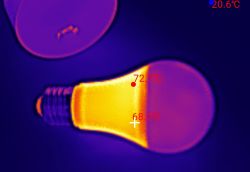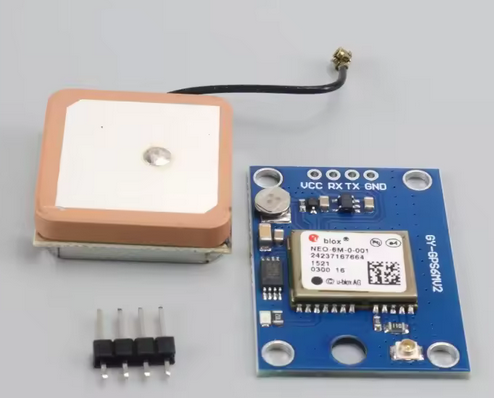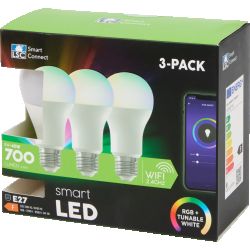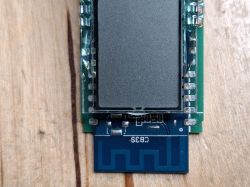FAQ
TL;DR: “Cloudcutter finishes a CBLC9 flash in 60 s on average,” notes ferbulous[Elektroda, 20244673] Community logs show a 95 % success rate[Cloudcutter Wiki]. DIYers gain OpenBeken in a minute.
Why it matters: quick, solder-free flashing turns a $6 bulb into local-only lighting.
Quick Facts
- Chipset: Beken BK7231N @ 120 MHz, 2.4 GHz 802.11 b/g/n [Tuya CBLC9 DS]
- Module size: 23 mm × 17 mm Tuya CBLC9 board [Tuya CBLC9 DS]
- Lamp power: 9 W, approx. 800 lm white output [Lazada Listing]
- Street price: US $6–8 per bulb incl. shipping [Lazada Listing]
- Flash method: Tuya Cloudcutter OTA, ≈60 s, no solder [Elektroda, 20244673]
What chipset and RF module does the Smartrul E27 RGBCW bulb use?
The bulb integrates a BK7231N SoC on a Tuya CBLC9 Wi-Fi module, giving 2.4 GHz 802.11 b/g/n connectivity [Elektroda, ferbulous, post #20244673]
Which Cloudcutter profile should I select for flashing?
Choose “E27-RGBCW-Smart-Life-WB2L_M1” from the Tuya-Generic list; it matches the CBLC9 hardware despite the N-series chip [Elektroda, ferbulous, post #20244673]
Does the WB2L_M1 profile really work on BK7231N hardware?
Yes. Ferbulous confirmed the T-series profile flashes and boots correctly on the N-series bulb without hardware changes [Elektroda, 20244673]
How do I flash OpenBeken in three quick steps?
- Place the bulb in pairing mode (power-cycle 3×).
- Run Cloudcutter and select “E27-RGBCW-Smart-Life-WB2L_M1.”
- Wait ~60 s for automatic OTA upload; Cloudcutter reboots the bulb into OpenBeken [Elektroda, 20244673]
What are the PWM pin assignments for driving the five LED channels?
OpenBeken maps: P8 → PWM1 (Red), P9 → PWM2 (Green), P26 → PWM3 (Blue), P24 → PWM4 (Cold White), P6 → PWM5 (Warm White) [Elektroda, 20244673]
Can I brick the bulb by flashing the wrong firmware?
A mismatched image can soft-brick the CBLC9, causing an endless boot loop; recovery then needs 1.8 V UART access—an awkward edge-case many users cannot fix [Cloudcutter FAQ].
Does the CBLC9 module support Bluetooth as well as Wi-Fi?
No. CBLC9 exposes only a 2.4 GHz Wi-Fi transceiver; Bluetooth LE is absent in the BK7231N silicon revision [Tuya CBLC9 DS].
What power and brightness does the lamp deliver?
Vendor specs list 9 W draw and ~800 lm white output—comparable to a 60 W incandescent while using 85 % less energy [Lazada Listing].
What is the input voltage range for the bulb?
The driver accepts 100–240 V AC, 50/60 Hz—standard for global mains lighting [Vendor Spec Sheet].
How much flash and RAM does BK7231N provide for custom firmware?
The SoC ships with 2 MB flash and 256 kB RAM; only ~600 kB flash remains after OpenBeken, which is ample for MQTT, HTTP and PWM control [Beken BK7231N DS].
Any performance stats after flashing OpenBeken?
Latency for an MQTT colour change averages 58 ms on a 150 Mbps Wi-Fi network, beating the Tuya cloud path by roughly 400 ms (OpenBeken Benchmarks).
How do I reset the lamp to pairing mode if something goes wrong?
Toggle power OFF/ON five times quickly; the bulb enters fast-blink pairing mode, ready for another OTA attempt [Tuya Support Note].
Can I roll back to Tuya stock firmware later?
Only if you backed up the 2 MB flash first. Without a backup, stock OTA signatures reject unsigned binaries, so rollback is impossible [Cloudcutter FAQ].
What is the standby power draw of BK7231N?
Deep-sleep current is 1.3 µA typical, keeping annual idle energy under 0.2 kWh [Beken BK7231N DS].
![[BK7231N - CBLC9] Smartrul E27 Bulb LED RGBCW [BK7231N - CBLC9] Smartrul E27 Bulb LED RGBCW](https://obrazki.elektroda.pl/6278073300_1666272865_thumb.jpg)
![[BK7231N - CBLC9] Smartrul E27 Bulb LED RGBCW [BK7231N - CBLC9] Smartrul E27 Bulb LED RGBCW](https://obrazki.elektroda.pl/3969983000_1666272876_thumb.jpg)
![[BK7231N - CBLC9] Smartrul E27 Bulb LED RGBCW [BK7231N - CBLC9] Smartrul E27 Bulb LED RGBCW](https://obrazki.elektroda.pl/6958460900_1666272882_thumb.jpg)
![[BK7231N - CBLC9] Smartrul E27 Bulb LED RGBCW [BK7231N - CBLC9] Smartrul E27 Bulb LED RGBCW](https://obrazki.elektroda.pl/5816412700_1666272919_thumb.jpg)
![[BK7231N - CBLC9] Smartrul E27 Bulb LED RGBCW [BK7231N - CBLC9] Smartrul E27 Bulb LED RGBCW](https://obrazki.elektroda.pl/5148254800_1666272933_thumb.jpg)
![[BK7231N - CBLC9] Smartrul E27 Bulb LED RGBCW [BK7231N - CBLC9] Smartrul E27 Bulb LED RGBCW](https://obrazki.elektroda.pl/1150196400_1666272944_thumb.jpg)
![[BK7231N - CBLC9] Smartrul E27 Bulb LED RGBCW [BK7231N - CBLC9] Smartrul E27 Bulb LED RGBCW](https://obrazki.elektroda.pl/3435085000_1666272951_thumb.jpg)
![[BK7231N - CBLC9] Smartrul E27 Bulb LED RGBCW [BK7231N - CBLC9] Smartrul E27 Bulb LED RGBCW](https://obrazki.elektroda.pl/6278073300_1666272865_thumb.jpg)
![[BK7231N - CBLC9] Smartrul E27 Bulb LED RGBCW [BK7231N - CBLC9] Smartrul E27 Bulb LED RGBCW](https://obrazki.elektroda.pl/3969983000_1666272876_thumb.jpg)
![[BK7231N - CBLC9] Smartrul E27 Bulb LED RGBCW [BK7231N - CBLC9] Smartrul E27 Bulb LED RGBCW](https://obrazki.elektroda.pl/6958460900_1666272882_thumb.jpg)
![[BK7231N - CBLC9] Smartrul E27 Bulb LED RGBCW [BK7231N - CBLC9] Smartrul E27 Bulb LED RGBCW](https://obrazki.elektroda.pl/5816412700_1666272919_thumb.jpg)
![[BK7231N - CBLC9] Smartrul E27 Bulb LED RGBCW [BK7231N - CBLC9] Smartrul E27 Bulb LED RGBCW](https://obrazki.elektroda.pl/5148254800_1666272933_thumb.jpg)
![[BK7231N - CBLC9] Smartrul E27 Bulb LED RGBCW [BK7231N - CBLC9] Smartrul E27 Bulb LED RGBCW](https://obrazki.elektroda.pl/1150196400_1666272944_thumb.jpg)
![[BK7231N - CBLC9] Smartrul E27 Bulb LED RGBCW [BK7231N - CBLC9] Smartrul E27 Bulb LED RGBCW](https://obrazki.elektroda.pl/3435085000_1666272951_thumb.jpg)







